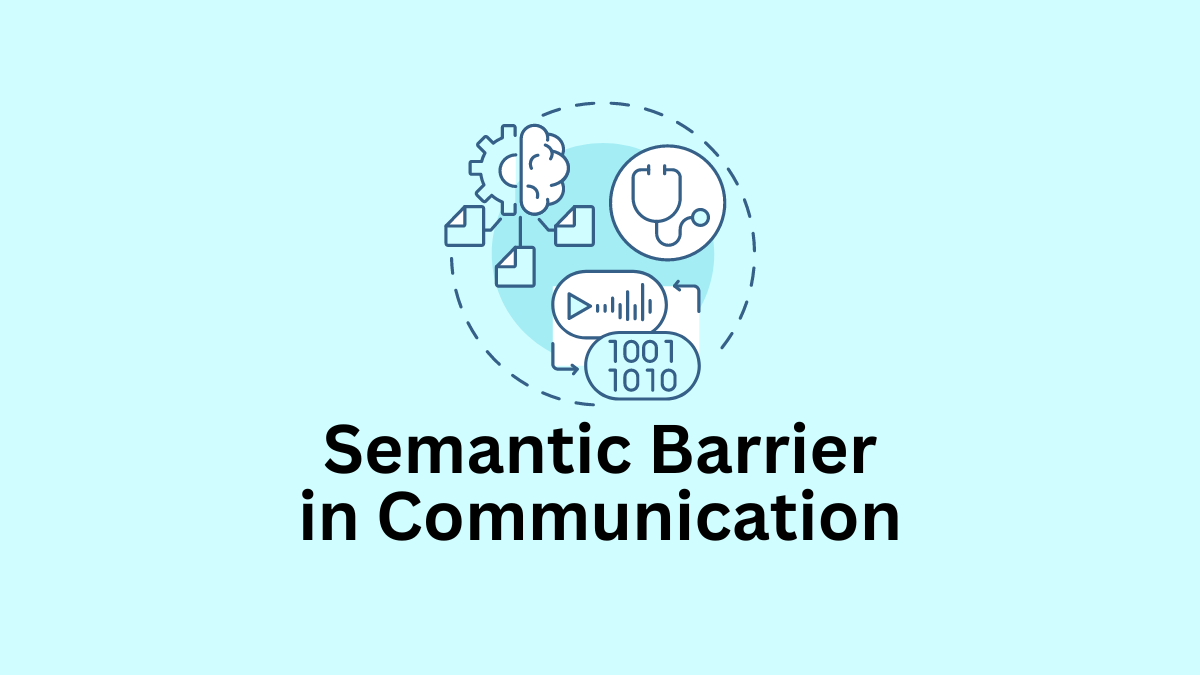What is Semantic Barrier in Communication?
Semantic barriers in workplace communication refer to obstacles that hinder understanding and interpretation of messages due to differences in meaning, language, or cultural context.
These barriers can arise from cultural differences, language features, tech issues, missed jokes, and lack of information. To overcome semantic barriers, individuals and organizations should prioritize clear and explicit communication, establish a shared understanding of terminology and norms, practice active listening, utilize appropriate body language, foster cross-cultural awareness, and encourage open communication to seek clarification when needed.
By addressing semantic barriers, workplaces can enhance mutual understanding and collaboration among team members, leading to more effective communication and improved productivity.
Causes of Semantic Barrier in Communication
The following are the eight common causes of semantic barriers to communication in the workplace:
Cultural Differences
Variations in cultural norms, values, and language can lead to semantic barriers. Different cultures may interpret words or phrases differently, causing misunderstandings.
Language Features
Linguistic nuances such as homonyms (words that sound alike but have different meanings), idioms, slang, and technical jargon can confuse communication, especially for non-native speakers.
Misunderstood Words
Words with multiple meanings or usage in various contexts can be confused if not used appropriately. This can result in misinterpretation of the intended message.
Non-Native Speakers
Individuals speaking a language that is not their native tongue may struggle with vocabulary limitations, leading to miscommunication and semantic barriers.
Missed or Misinterpreted Jokes
Humor relies heavily on shared cultural references and language nuances. When jokes are misunderstood or not perceived as intended, it can create confusion and hinder effective communication.
Differences in Emoting
Variances in emotional expression, whether due to cultural norms or individual differences, can lead to misinterpretation of feelings and intentions, contributing to semantic barriers.
Read More: Organizational Barrier in Communication
Tech Troubles
Technical issues such as poor internet connection or audio/video disruptions can distort communication cues, leading to misinterpretation or misunderstanding of messages.
Lack of Information
Incomplete or insufficient information provided in communication can result in misunderstandings, as recipients may fill in gaps with their assumptions or interpretations.
Strategies To Overcome Semantic Barriers in Communication
The following are some strategies to overcome semantic barriers to communication in the workplace:
Be Explicit
In communication, clarity is key. Express expectations directly, avoiding ambiguous language or sarcasm that could lead to misunderstandings. By clearly articulating messages without relying on coded language, individuals can ensure that their intentions are accurately conveyed and understood by others.
This strategy promotes transparency and reduces the likelihood of semantic barriers arising from misinterpretation.
Read More: Physical Barrier in Communication
Use Systems
Establishing standardized communication protocols within an organization can help mitigate semantic barriers. By implementing clear guidelines for meetings, documentation, and training, individuals can ensure consistency in communication practices.
Providing written instructions and structures helps to minimize uncertainty and confusion among team members, fostering a shared understanding of expectations and processes.
Practice Active Listening
Effective communication involves not only speaking clearly but also listening actively. By attentively engaging with speakers and acknowledging their feelings and expressions, individuals can better understand the context and nuances of communication.
Active listening promotes empathy and mutual understanding, reducing the likelihood of semantic barriers caused by misinterpretation or miscommunication.
Read More: Leadership in Management
Establish Shared Understanding
Language and terminology can vary widely across different contexts and cultures. To overcome semantic barriers arising from linguistic differences, organizations should define and clarify key terms, jargon, and acronyms used within the workplace.
Encouraging cross-cultural awareness and sensitivity fosters inclusivity and understanding among team members, ensuring that communication remains clear and effective across diverse backgrounds.
Use Appropriate Body Language
Non-verbal cues, such as facial expressions and gestures, play a significant role in communication. By using appropriate body language to complement verbal messages, individuals can enhance clarity and reinforce their intended meaning.
Consistency between verbal and non-verbal communication signals reduces the likelihood of conflicting messages and potential misunderstandings, promoting effective communication in the workplace.
Read Next: Psychological Barrier in Communication

Sujan Chaudhary holds a Bachelor in Business Administration (BBA) degree and is currently pursuing an MBA degree. He loves to share his business knowledge with the rest of the world.
